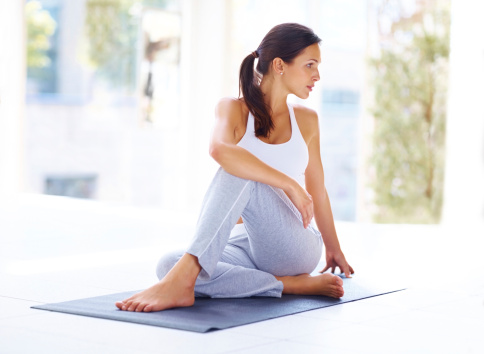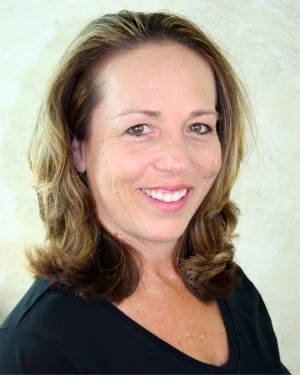 I know it seems like blasphemy to talk about hip exercises and say that tight hips aren’t terrible, but let’s take a closer look at this perspective.
I know it seems like blasphemy to talk about hip exercises and say that tight hips aren’t terrible, but let’s take a closer look at this perspective.
Every day in the studio I see clients who are plagued with poor posture and tight hip flexors from sitting all day at work. Let’s face it, gravity is not our friend, slumping posture, a weak core, grippy hip flexors, inner and outer thigh muscles that are out of balance, tight hamstrings and calves, feet and ankles that are both stiff and weak, it’s no wonder that people struggle to achieve healthy, normal functional movement habits.
But I really don’t think that tight hips are terrible. The muscles and ligaments that surround the hip are tight and should be strong for a reason… To keep us upright, and allow us to walk and run, hop, skip, and jump. I’m sorry, but IS stretching really the solution if you’re struggling to climb a flight of stairs, or are challenged to get up out of a chair? NO, it’s a hip extension and STRENGTH issue!
Is stretching the hips going to help you balance better? NO, it’s improving the strength and support of everything from your feet to your core, and improving the relationship between your pelvis and your legs. For most folks, this means working on body posture, placement of the pelvis and spine, and improving strength of the inner thighs, outer thighs, Hamstrings, Glutes, and Abdominals because they ALL play a major role in improving balance and body control.
I realize that those of you reading this, may not struggle with the challenge of climbing stairs or getting up off the toilet yet, but trust me… sooner or later you likely will be facing these quality of life issues if you’re hips and legs are not strong enough to support you!
What’s the secret to getting the most out of your hip exercises? There is more to improving hip mechanics than stretching your quads and hip flexors. Let’s face it, if your hips are tight, there’s probably a very good reason why, and your daily movement and exercise habits are only continuing to reinforce this compromised support system.
Tighter in the front of the hips, means weaker in the back… Tighter outer thighs, means weaker inner thighs… It’s entirely possible that any of your muscles can be both weak and tight! And I can’t tell you how many people I see using their Quads and hip flexors “thinking” that they’re working their core especially to hold the legs up without help on exercises like the Hundred.
So go ahead, keep doing some hip stretching exercises and rolling your IT bands on a foam roller, but have you ever wondered why you stretch, and stretch, those extremely tight hip muscles and they never really seem to release and “let go?”
For a healthy body we need BALANCED MUSCLE DEVELOPMENT. It’s a key movement principle for Pilates. Balanced muscle development doesn’t necessarily mean that every opposing muscle group has a 50/50 relationship. But for us to move our bodies, we are working with the lever and pulley system of our skeleton and musculature, which requires the right balance of work and release for healthy movement.
Walking is one of the #1 most efficient hip exercises to improve gait and train efficient body mechanics. And there is A LOT going on with the pelvis, hips, and legs for a healthy stride. The problem is, hardly anybody is using their lever and pulley system to walk well! (My Pilates-Walk™ book will be available soon, with simple training tips and exercises to help you make the most of your walking workouts, subscribe to the Centerworks Wellness Success newsletter to get announcements when this resource becomes available, as well as get tips, and updates for upcoming workshops.)
Having an improved understanding of how the hips and legs need to work, is critical to get the right exercises in your Pilates program, and transfer this body knowledge back to your regular workouts to reinforce healthy hip habits.
Healthy hips not only help improve your leg swing to walk, but also can significantly improve how your lower back feels, to reduce or eliminate back pain and improve core support.
Years ago I had a really annoying hip pain problem. I went from one massage therapist to the next trying to get some relief… I consulted with several different Chiropractors, Kinesiologists, and D.O.’s, and nobody could seem to make my hip pain go away. Then, I met one of my dearest Pilates Mentors, the fabulous Dianne Miller from Vancouver, Canada, and in ONE private training session, she helped me understand why my hip hurt, and what muscles I would need to strengthen to get things back in balance. Within 2-3 days of focusing my attention to a few underdeveloped muscle groups, my hip pain went away, and hasn’t bothered me since. There was nothing I could have “stretched” that would have ever solved my problem. Interestingly, for this hip issue, it was a pelvic floor weakness! By strengthening the connection from the front to the back of the pelvic floor (the pubic bone to tailbone connection) my over held, shoved up too far in the socket thigh bone, and grippy, grabby hip flexors started trusting me that it was okay to let go.
I’m not suggesting that doubling up on your Kegel exercises is going to solve the world’s tight hip problems, because a Kegel isn’t the answer. But learning how to use your pelvic floor muscles well can be a nice start to help lift the pelvis up off the legs for more space in the socket. With more space in the hip socket, you can then focus on developing the muscles for a more efficient leg swing. Learn more with the Pelvic Floor e-course you’ll find here…
And of course it’s not all about the Pelvic floor. On the Pilates equipment, every single exercises that you’re pushing against a spring with your feet against the foot bar, in the straps, or held up in free space, gives you an opportunity to work on improving muscle balance and retraining the body for better hip mechanics. You have the choice to use the equipment to help support FINDING the right muscles to move, or can go through the motions of movement, continuing to reinforce your old habits. Helpful to have the friendly eye of a great Pilates teacher helping to coach you along to find and feel the right stuff! But it’s also important to work on your own to develop your brain-body, hip-to-head connection. Check out the 6 Simple Training Tips for Functional Movement at the Hips in this Centerworks® e course.
Think Before You Move…
- Is the movement of your leg initiating from the foot end of the leg, or from the hip? For example: When you’re doing Pilates exercises with your feet in the straps, are you pushing the feet against the straps, or starting the movement from the back of the hip to work the whole leg to resist against the springs?
- What is the relationship of your pelvis to your leg (tucked, neutral, arched)?
- Is your thigh turned inward, parallel, or turned outward?
- Is the turn to rotate inward or outward coming from the hip, the knee, or the foot end of the leg?
Different leg and hip strengthening exercises may have different answers to each of these questions. And the answer might also depend on if you are moving the leg to the front, side, or back. Discover the power of paying attention to details to help you keep your hips healthy, whether you’ve got a “tight” pair of hips, or they are looser. Pilates is a great place to explore exercises to improve your balanced body development for a healthy pair of hips. Then, every time you climb up and down stairs, walk from the house to the car, sit down and get up off the toilet, do squats at CrossFit, walk on the treadmill, bike, swim, do Yoga, or any other physical activity, you have an opportunity to work on improving muscle balance for your hips and legs.
Tight doesn’t have to be a bad thing. What’s most important is finding the right support, and improving balanced muscle development, to enjoy a free range of motion in all directions for healthy movement habits at the hips.


0 Comments